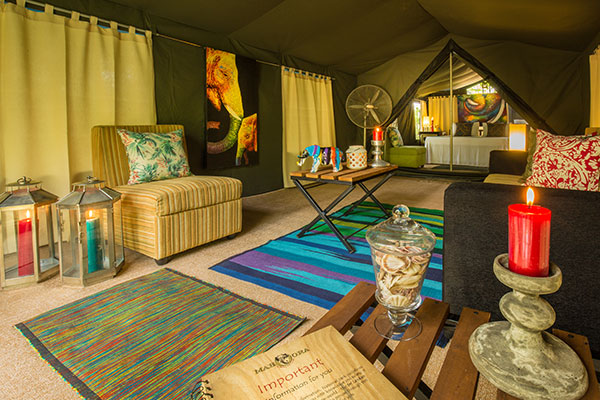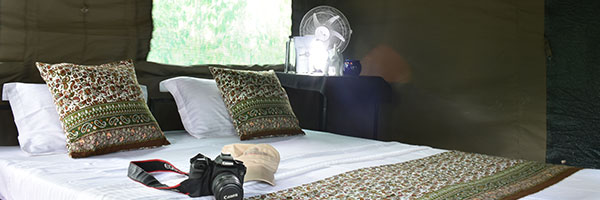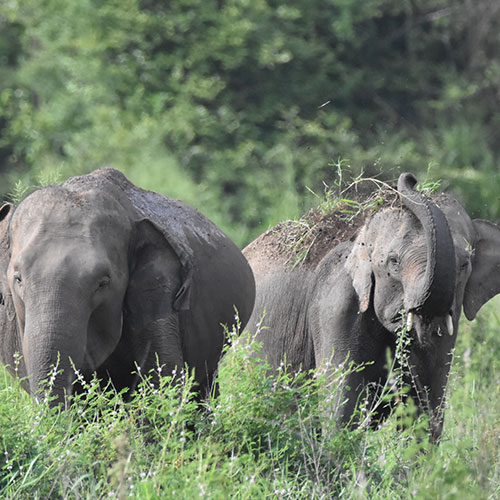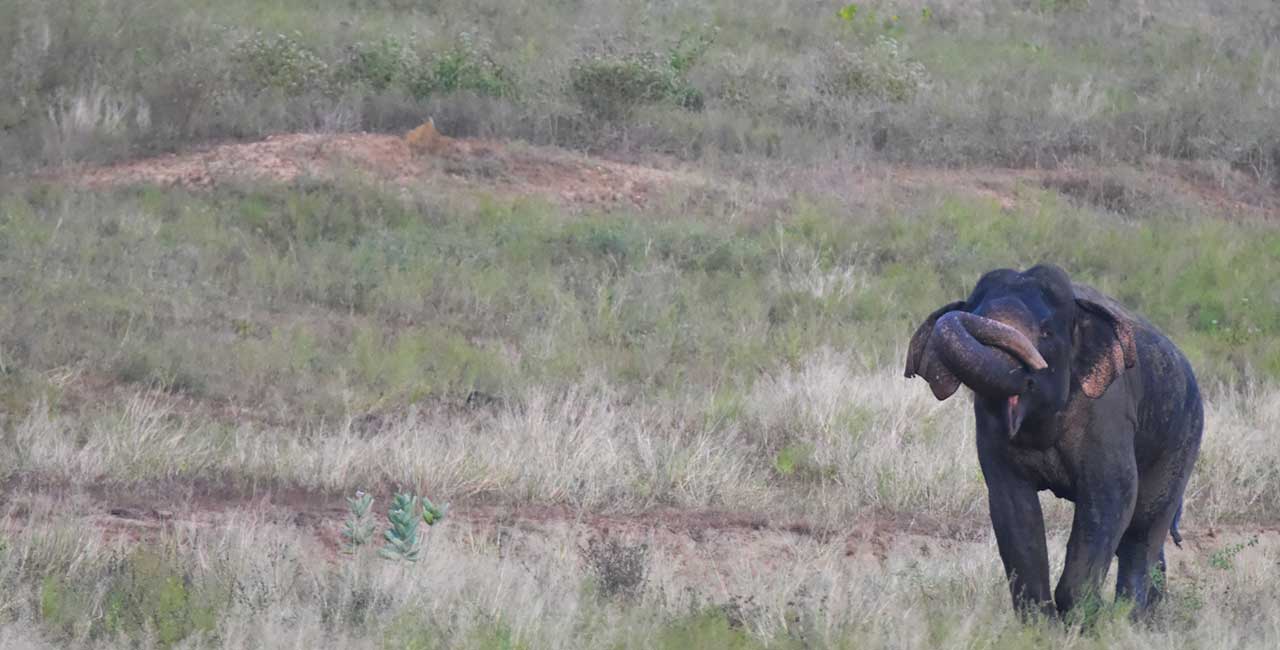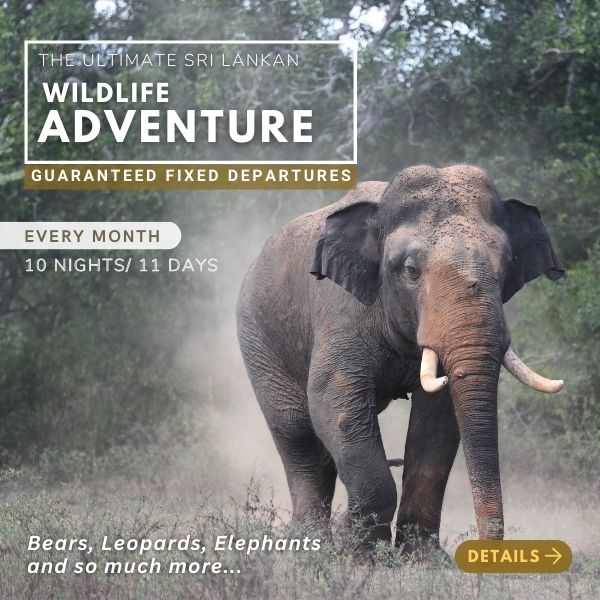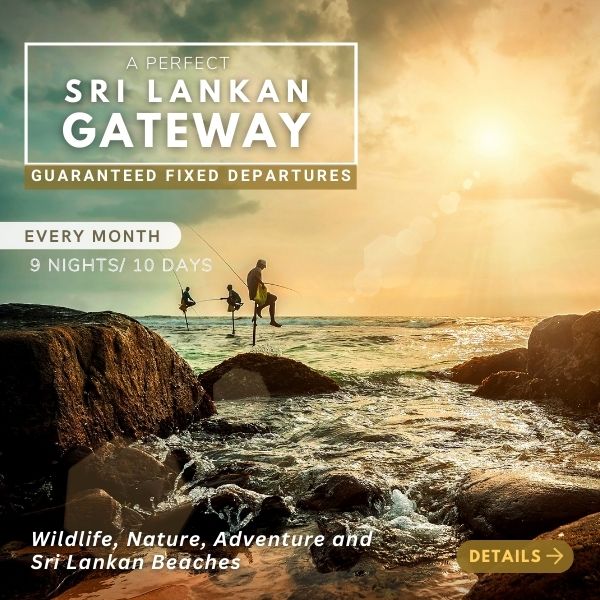Boat safaris and swimming elephants at Gal Oya National Park
The Gal Oya National Park is the only National Park in Sri Lanka where it is possible to go on a boat safari. As it borders a reservoir, there are many little islands which can be seen. A highlight is the frequent sighting of elephants swimming from one island to another. Sri Lankan Elephants are strong swimmers and they use their trunks as snorkels. They can also travel long distances in water. In fact, it is believed that the first elephants to inhabit Sri Lanka actually swam all the way from India and took up residence on the island.
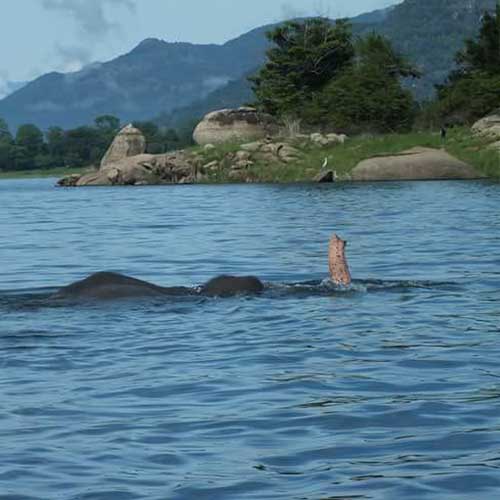
Mammals at Gal Oya National Park
Gal Oya Wildlife National Park Safaris are a Mahoora speciality. The 25,900 hectare Park has about 32 species of mammals including the common Langur, the endemic Toque Macaque, Sri Lankan Leopards, Sri Lankan Sloth Bears, Sri Lankan Elephants, Wild Boar, Water Buffaloes and 3 species of Deer. The large elephant population at the Gal Oya National Park has made many of these islands its own. Mugger crocodiles and the Lesser Albatross Butterfly can also be seen in Gal Oya while on either jeep or boat safaris.

Birdlife at Gal Oya National Park
Reptiles & Amphibians at Gal Oya National Park
Flora at Gal Oya National Park
Gal Oya National Park History and Geography
Gal Oya National Park Sri Lanka, located in the Uva Province which is situated in the south-east of Sri Lanka, was established in 1954 by the Gal Oya Development Board, primarily to protect the catchment area of the vast 'Senanayake Samudra' Reservoir which is the largest reservoir in Sri Lanka. It was subsequently handed over to the Department of Wildlife Conservation in 1965.
The Gal Oya National Park is rich in both fauna and flora and about 45 percent of the Park is covered by evergreen forest while a further 33 percent is taken up by savannah areas. The Park spans over 25,000 hectares in total and has three mountains within its boundaries vis-à-vis Danigala, Nilgala and Ulpotha with the highest peak reaching 900 metres.
The Buddhangala Sanctuary, one of the four protected areas which make up the Gal Oya National Park, has ruins of a Stupa and other buildings dating back to the 2nd Century BC. It is believed that Lord Buddha visited here during his last time in Sri Lanka. In the hilly country to the West of the Park was one of the last strongholds of Sri Lanka's indigenous tribes, the Veddas.

Getting the most out of your Gal Oya National Park Safari
Any safari would not be complete without an expert naturalist guide who can correctly point out bird, plant and animal species. All the guides at Mahoora are experienced and familiar with the movements of the animals. Do not forget your binoculars, and if you have not got a pair of your own, you can count on us.




